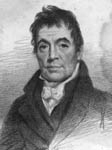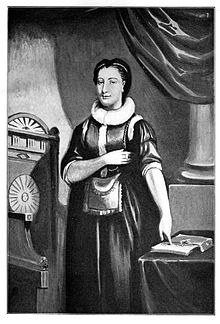An tAthair Eoghan O Caoimh
Monday, April 15th, 2013The Penal Laws were passed by the English parliament from the end of the 17th. Century onwards in what was to be the final solution in the process to destroy the Catholic Church in Ireland, a project which had begun in the reigns of Elizabeth 1 and James 1. At the beginning of the 18th. Century one of the penal laws that the English Parliament passed included a provision that all ‘ Popish Parish Priests’ had to be registered. Failure to do so would mean immediate arrest and charges of plotting against the civil and religious authority of the King or Queen as the case might be – a crime which carried the death penalty. The registered priest was required to be ‘ of peaceable behaviour and not to depart out of the county where his abode lay’.
In addition two persons had to give a surety of £50 each to guarantee that the priest would be of good behaviour according to the terms of the Act of Parliament. This was a considerable sum of money at the time. The register for Cork county compiled in 1704 states that Owen Keefe ‘pretended ‘to be parish priest of Clonfert as the Parish of Newmarket was then called. His guarantors, who entered into a bond of £50 each on his behalf., were Manus O Keefe of Knocknageeha in the parish of Cullen and Denis O Callaghan of Lismaelcunnin, west of Kanturk, both of whom must have been men of substance in the locality. It is probable that this Denis O Callaghan was a protestant. Lismaelcunnin seems to have been previously connected with the MacAuliffes. Manus had also changed religion and as a result held on to O’Keeffe lands in the Cullen area..This branch of the family claimed to belong to The O Keefes of Dromach, the principal family of the O Keefe clan in Dúthalla. The O’Keeffes of Knocknageeha also secured possession of lands east of Newmarket in a district called Cnoc Leacóg ( the hill of the flagstones? ) which they renamed Mountkeefe. In the register Father Owen, unlike his guarantor is stripped of the ‘O’ in his name but it is interesting that he has the patronage of two members of Dúthalla Gaelic families suggesting that the old Gaelic Aristocracy still had some standing and authority in Dúthalla.
Father Owen was said to be 50 years of age at this time which means that he was born in 1654. He is said to have been living in Garraunawarrig but the location of any mass-house is not mentioned. However, M. J. Bowman in his invaluable book The Place Names and Antiquities of the Barony of Duhallow referring to the town land of Garraunawarrig Upper mentions that there was ‘a church site and burial ground in Mr. Kenny’s land.’ He adds that ‘ No sign of either are there now.’ We must remember that at this time Catholic buildings of any size or substance had been taken over by the Church of England which was the official state religion. The Catholics would have been only allowed to celebrate their faith in Mass houses of a temporary nature or in the open air at Mass rocks or other hidden sites. There must have been several Mass sites in the parish of Confert at this time as it included the modern parishes of Newmarket, Kanturk and Meelin/Rockchapel.
As Catholic seminaries were not allowed in Ireland at this time Fr. Owen was prepared for the priesthood in the Irish College at Toulouse and he was ordained there by the bishop of Sarlat in1679. The Irish College in Toulouse was one of the smaller Irish colleges on the continent. It was founded at the beginning of the 17th. Century and was supported at first by an endowment from Anne of Austria and this was confirmed by her son Louis XIV in 1659. This royal patronage was eventually to lead to the seizure of the college by the French revolutionaries in 1793. After the republic was declared in 1792 the government set out to remove all traces of royalty and of the old regime. As the church was seen to have been a supporter of the monarchy church property was confiscated and sold, seminaries were closed and priests who did not flee before the onslaught were often put to death on the guillotine charged with opposing the revolution. The small number of priests in Toulouse seem to have escaped with their lives but to day there is no trace of the seminary in in the city although the site is known to have been at the junction of Rue de la Bastide and Rue Valade.
What else is known about Father Eoghan? Where was he born? When did he die? Where is he buried? Information on priests in Penal times is difficult to come by for obvious reasons. They were part of a hidden Ireland that was despised and regarded with deep suspicion by the authorities,especially those who had been trained in the continent and who had returned on what the Church at this time called, the Irish Mission. Those who came from France would have been the subject of special attention as this country was considered, at the time,to be England’s greatest enemy. The first trace we have of him, apart from the register, is a short verse in a manuscript ( Egerton 150) that is held in the British Library.This lighthearted verse concerns four O’Keeffe priests, all called Eoghan, who lived in Dúthalla in the early part of the 18th. Century and it was in all probability composed by one of them. The composer is most likely to have been the Eoghan O Caoimh who was parish priest of Doneraile at the beginning of the 18th. Century. He died in 1726. He was a famous Gaelic scholar and poet and was born at Glenville near Fermoy in1656 in the ancient territory of the O Keeffe clan. The verse is as follows with a literal translation into English
Eoghan seanda ó Cheann Toirc is sine den bhuíon
Is Eoghan sanntach ó cheantar Chuilinn Uí Chaoimh
Eoghan crannda nach ramharphluic ó iomad na dí
Is Eoghan manntach sa dhrandal ag druidim le haois.
***
Ancient Eoghan from Kanturk is the eldest of the group
And greedy Eoghan from the Cullen area
Withered Eoghan who is not fat jowled from too much drink
And Eoghan gapped in the gums who is getting old.
We can assume that Eoghan from Kanturk is the priest who was named as parish priest of Clonfert in 1704. Can we assume that when this verse was composed that he was living in Kanturk? That he was the oldest of the group also fits in as he was two years older than the poet, father Eoghan the parish priest of Donraile, who is also as he states ‘ ag druidim le haois’
Sources: Archivium Vol.1 1912.The Irish Seminary in Toulouse by Patrick Boyle C.M. JCHAS. Ser.2 Vol. LIX. 1954, pp. 22-33.
Seamus O’Croinin





